Picture
(Click on any picture to enlarge)
|
Description
|
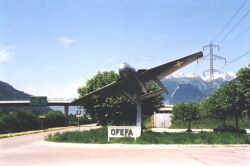
|
At Sion airport, Switzerland: A DeHavilland DH 100 Mk 6 Vampire, front view
|
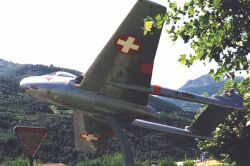
|
At Sion airport, Switzerland: A DeHavilland DH 100 Mk 6 Vampire, side view
|
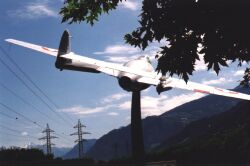
|
At Sion airport, Switzerland: A DeHavilland DH 100 Mk 6 Vampire, rear view
|
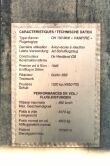
|
At Sion airport, Switzerland: Data of the displayed DeHavilland DH 100 Mk 6 Vampire
|
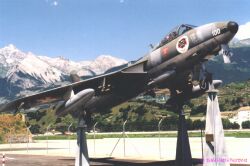
|
At Sion airport, Switzerland: A Hawker Hunter, front view
|
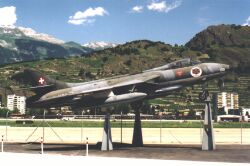
|
At Sion airport, Switzerland: A Hawker Hunter, side view
|

|
At Sion airport, Switzerland: A Hawker Hunter, rear view
|
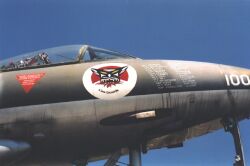
|
At Sion airport, Switzerland: A Hawker Hunter, detail of right side near cockpit
|
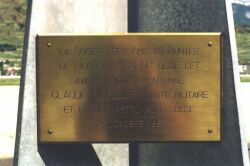
|
At Sion airport, Switzerland: A plaque at the stand of the Hawker Hunter, text in French
|
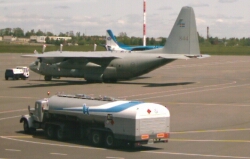
|
At Vilnius airport, Lithuania: A Swedish Tp84 Herkules, #844, at the apron for refueling before taking off
(aircraft type internationally more known as Lockheed C-130H Hercules)
|
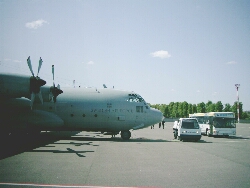
|
At Vilnius airport, Lithuania: A Swedish Tp84 Herkules, #844, at the apron (aircraft type internationally more known as
Lockheed C-130H Hercules). Passengers arriving by the airport bus
|
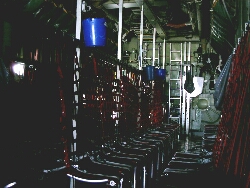
|
Somewhere in Sweden: Tp84 Herkules, #844, configured for personal transport (aircraft type internationally more known as
Lockheed C-130H Hercules). Interior view forward from right side
|

|
Somewhere in Sweden: Tp84 Herkules, #844, configured for personal transport (aircraft type internationally more known as Lockheed
C-130H Hercules). Interior view forward from left side. The toilet is the little box (marked with a red circle in the picture) at suitable height at the right side of the door.
Lift the little hatch, stand steady, aim carefully, and hope for no turbulence... Low image quality
|
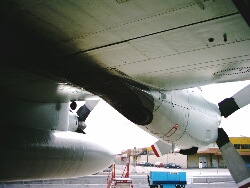
|
At Stockholm/Arlanda airport, Sweden: Tp84 Herkules, #844 (aircraft type internationally more known as Lockheed C-130H Hercules).
View from left rear door towards the two Allison engines (with an external fuel tank between them) at left wing. Each engine
(type T56-A-15) has a power of 3354 kW (4508 hp)
|
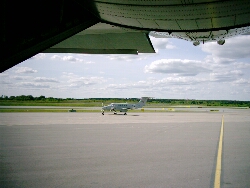
|
At Stockholm/Arlanda airport, Sweden: Tp84 Herkules, #844 (aircraft type internationally more known as Lockheed C-130H Hercules).
View from the rear ramp. One of the Swedish Airforce's smaller transport aircraft, Tp101 #014 (civil designation Beech 200), passing by
|
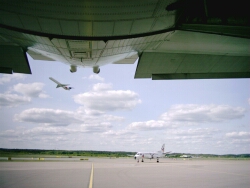
|
At Stockholm/Arlanda airport, Sweden: Tp84 Herkules, #844 (aircraft type internationally more known as Lockheed C-130H Hercules).
View from the rear ramp: A Nordic Airlink SF340, SE-LMX, passing by, while a SAS (Scandinavian Airlines) MD-80-something or
DC9 takes off in the background
|
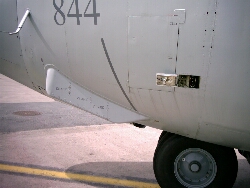
|
At Vilnius airport, Lithuania: Tp84 Herkules, #844 (aircraft type internationally more known as Lockheed C-130H Hercules). Detail of left
side near the nose gear with markings for chaff and flares - the aircraft's countermeasures
|
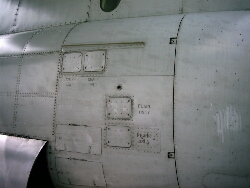
|
At Vilnius airport, Lithuania: Tp84 Herkules, #844 (aircraft type internationally more known as Lockheed C-130H Hercules). Detail of
left side between the main gear and the rear side door with markings for chaff and flares - the aircraft's countermeasures
|
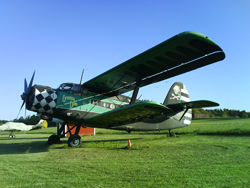
|
Stockholm-Hova airport, Sweden: An-2 (NATO name Colt , Russian unofficial name Annushka or Kukuruznik ) ES-CAB, painted in some kind of pirate style
|
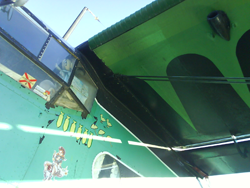
|
Stockholm-Hova airport, Sweden: An-2 (NATO name Colt , Russian unofficial name Annushka or Kukuruznik ) ES-CAB, detail of left side
|
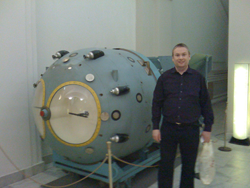
|
Polytechnical Museum, Moscow: Aerial bomb type RDS-1, probably manufactured by the Kurchatov institute in 1951. The charge was a nuclear charge (fission device of implosion type based on 239Pu) with a yield of 20 kt. This type of bomb was successfully tested for the 1st time August 29, 1949.
|
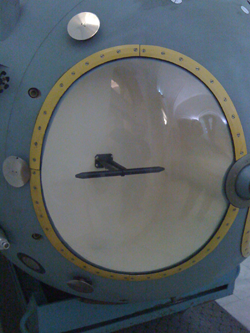
|
Polytechnical Museum, Moscow: Aerial bomb type RDS-1, detail picture of an antenna for a radar altimeter
|
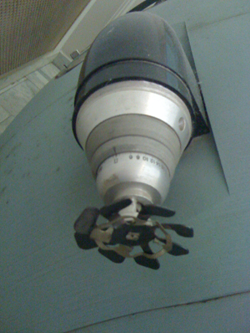
|
Polytechnical Museum, Moscow: Aerial bomb type RDS-1, detail picture of one of the arming devices
|
Picture
(Click on any picture to enlarge)
|
Description
|

|
Polytechnical Museum, Moscow: Mercury rectifier (ion valve) type RV-9, 130 kV, 900 A, manufactured by VEI, Moscow, in 1960
|
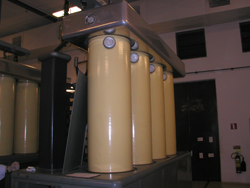
|
Somewhere in Sweden : Mercury rectifier (ion valve), 150 kV, 950 A, manufactured by ASEA, Västerås, Sweden, in the beginning of the 1960s
|
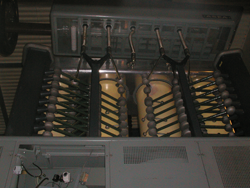
|
Somewhere in Sweden : Side view of a mercury rectifier (ion valve), 150 kV, 950 A, some covers taken away
|
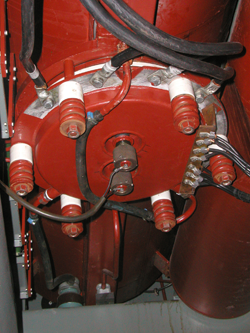
|
Somewhere in Sweden : Mercury rectifier (ion valve), 150 kV, 950 A, seen from below, covers removed
|
Picture
(Click on any picture to enlarge)
|
Description
|
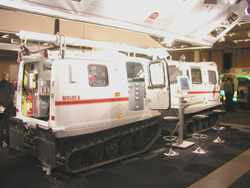
|
EPS conference 2006, Gothenburg, Sweden: One of Svenska Kraftnät (a state utility the runs the national electric grid of Sweden) tracked command vehicle for the emergency communication system MOLOS . The vehicle contains, among other equipment, en base station for DECT telephony plus 2 DECT base stations for external deployment,
DECT handsets the assign to personnel in the field, a base station for VHF radio (telephony) and handheld transceivers to assign to personnel in the field, short-wave radio for telephony and data communication over long distances,
radio for cooperation with police and rescue services, radio for VHF communication with aircrafts/helicopters, possible connection to the public switched telephone network (wire) and the GSM/GPRS and NMT cellphone/data networks, connection to the MOBITEX network, router for local WLAN,
telephony and data communication via satellite (Globalstar and Inmarsat), computer support for GIS and command & control, a 10 kVA power plant. To patch traffic between the different communication systems there is a common computerized switch for telephony, radio and data.
|
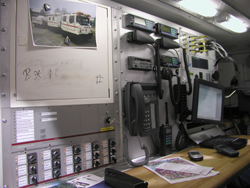
|
EPS conference 2006, Gothenburg, Sweden: Interior of Svenska Kraftnät tracked command vehicle
|
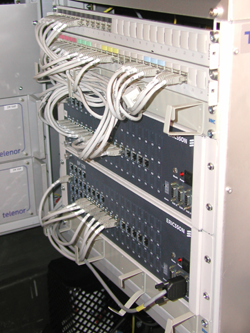
|
EPS conference 2006, Gothenburg, Sweden: Telephony, radio and data switch type 128I by Ericsson in Svenska Kraftnät tracked command vehicle
|
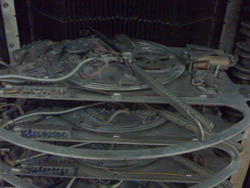
|
Polytechnical Museum, Moscow: 500 selectors manufactured by Swedish Ericsson in an automatic telephone exchange with a capacity of 240 subscribers. The automatic telephone exchange was manufactured by the Red Dawn plant in what then was Leningrad during the beginning of the 1930s
|
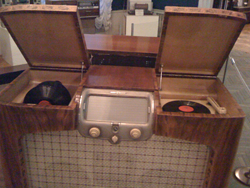
|
Polytechnical Museum, Moscow: Radiogramophone, type Riga T-51 manufactured in 1950 at the plant Radio technology in Riga (in what then was the Latvian Soviet Republic in the Soviet Union), which once belonged to Iosif Vissarionovitj Dzjugasjvili (also known as Stalin).
|


